
All categories
Featured selections
Trade Assurance
Buyer Central
Help Center
Get the app
Become a supplier

(1506 products available)
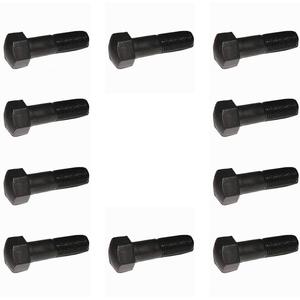



















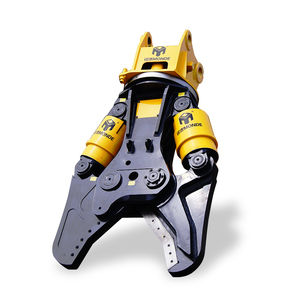
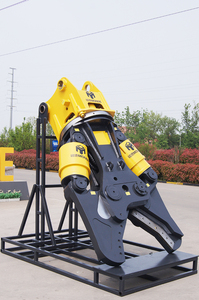








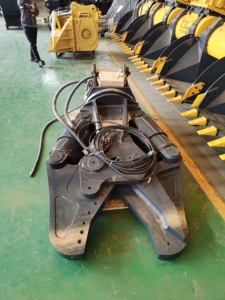




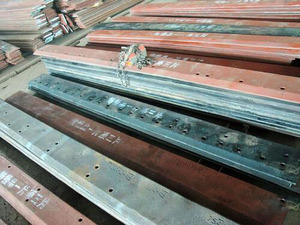
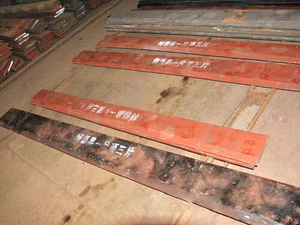









Caterpillar cutting edges are parts of a machine that are replaceable and are designed to cut through hard materials, such as rocks. Mainly used in the construction and excavation industry, they come in various types to suit different machines and applications.
They are the most common types of cutting edges for a bucket or blade. They are designed with two angled cutting surfaces that meet at the center line of the edge, forming a V-shape. They are reversible, which means that when one side wears out, they can be rotated to use the other side. This can be very beneficial for site operators and owners because it can extend the lifespan of the cutting edge and reduce the frequency of replacement. Double beveled edges also provide good cutting performance and traction on the ground. They can be used on various earthmoving machines and attachments, such as excavators, bulldozers, and loaders.
Serrated cutting edges have a tooth-like appearance. They are designed with multiple pointed teeth along the edge. Just like double beveled edges, they can also be used on various earthmoving machines, but they are more suitable for specific applications. Serrated edges are great for materials like dirt, mud, and soft soil. The toothed design can help the blade penetrate the material more easily by creating a sawing action. It can also minimize blade bounce and provide a better cutting angle. Serrated cutting edges are great for landscaping, road maintenance, and site clearing in areas with softer materials.
Overlay end bits are cutting edges that are used at the end of the machine's blade. They are generally made of a harder material, such as overlay steel or carbide, to provide extra durability and longevity. Overlay end bits can be used in high-impact and high-abrasion applications, such as mining, demolition, and quarrying. They can also help protect the machine's original blade and increase the maintenance interval. Overlay end bits can be bolted or welded onto the existing cutting edge, which is easy to install and replace.
Curved cutting edges are designed with an arc-shaped profile. This design can help the machine's bucket or blade follow the natural contour of the ground. They are commonly used in excavators for digging, grading, and shaping applications. Curved cutting edges can improve the machine's maneuverability and efficiency. They can also result in a smoother finish and reduce the need for manual touch-ups. Besides, the curved shape can help reduce material spillage and increase material retention, which is great for excavating in confined areas.
Depending on the model of the Caterpillar machine, there are different specifications to look for when it comes to the dimensions of the cutting edges. The width of the cutting edge can range from 152mm to 203mm (6 to 8 inches), and the height will be between 25.4mm and 63.5mm (1 to 2.5 inches). The length of the cutting edge will depend on the machine model and blade size. The thickness of the Caterpillar cutting edge can be from 9.5mm to 25.4mm (3/8 to 1 inch) for dozers and 9.5mm to 50.8mm (3/8 to 2 inches) for excavators. The weight can be 50 kg to 500 kg for dozers and 10 kg to 200 kg for excavators. The material of the cutting edges is usually steel with a carbon content of 0.7% to 1.3%.
Maintaining Caterpillar cutting edges properly is crucial for their longevity and performance. Here are some general maintenance tips for Caterpillar cutting edges:
The following are some of the practical applications of Caterpillar cutting edges in various industries.
The mining industry uses a variety of cutting edges to mine different types of materials. For example, the Cat loader cutting edge is used in quarries to mine rocks. Hardened steel edges are used to cut through the strong, hard rocks. The steel used in the cutting edge is tough enough to withstand continuous impact. The cutting edge maintains its sharpness for a long time before it is replaced. It also protects the bucket from excessive wear. On the other hand, the grader cutting edge is used in open-pit mines. The edge is mounted on a grader machine to level the ground and maintain haul roads. When a curved cutting edge is used, it moves smoothly through the soil to create a precise and uniform level. Both the grader and the loader cutting edges are made of high carbon steel, which is heat-treated to increase hardness and durability. The cutting edge is attached to the base machine frame and moves back and forth to level the ground.
Cutting edges are used in construction to level the ground and remove unwanted soil. Grader cutting edges are mounted on a motor grader machine. The operator mounts the machine and moves it back and forth to level the ground. The cutting edge is mounted on the bottom of the blade. It is usually made of high carbon steel, which is heat-treated to increase hardness.
Cutting edges are used in the agricultural industry to clear fields, level the ground, and remove unwanted soil. A typical example of a cutting edge used in the agricultural industry is the box blade. The box blade is a three-point hitch machine with a row of teeth and a straight cutting edge. It is attached to a tractor and pulled backward to level the ground. The cutting edge is adjustable, and it comes in different lengths and thicknesses to suit various applications. For instance, a longer and thicker cutting edge is suitable for removing a large amount of soil, whereas a smaller one is ideal for light-duty tasks.
Cutting edges are used in the fishing industry to process fish and seafood. For example, the fish fillet knife has a serrated cutting edge that is used to cut through fish bones and skin. The cutting edge is usually curved to follow the natural lines of the fish. It is also made of stainless steel, which does not rust when exposed to water and salt. The cutting edge is also lightweight and easy to handle, thus reducing operator fatigue.
Cutting edges are used in landscaping to create straight edges, cut through sod, and define flower beds. The edging knife is a common cutting edge used in landscaping. It is made of steel and has a wooden handle. The flat blade is pushed into the soil to create a sharp and clean edge. It is also lightweight and easy to handle, thus reducing operator fatigue.
When selecting a compatible cutting edge for a piece of equipment, there are several essential factors to consider:
It is essential to confirm the specific machine model and blade type. Different models and types of equipment may require distinct sizes, shapes, and mounting hole configurations of cutting edges. Ensuring a proper fit is crucial for optimal performance and safety.
Consider the application and materials the machine will be used to cut or excavate. Different types of cutting edges are designed for various materials, such as dirt, rock, asphalt, or snow. Selecting an edge with the appropriate material and thickness for the application will help maximize durability and cutting efficiency.
Choose a cutting edge that is manufactured from high-quality steel to ensure strength and wear resistance. Consider edges that are compatible with the machine's mounting system for easy installation and secure attachment.
When purchasing a cutting edge, it is important to work with a reliable supplier who can provide assistance in selecting the right edge for the specific machine and application. The supplier should offer clear product information and guidance throughout the purchasing process. Additionally, consider the supplier's after-sales support and availability in case of any future needs or issues.
Q1: What is the function of a cutting edge on a bulldozer or excavator?
A1: The primary function of a bulldozer cutting edge is to assist in ground penetration and traction. The cutting edge of a bulldozer is designed to cut into the material being pushed. It can be used to trim the surface of the ground before pushing it. The excavator cutting edge serves a similar function in controlling how the excavator bucket interacts with the ground. The bottom edge of the bucket is referred to as the excavator bucket cutting edge. It cuts into the ground as the excavator digs. The cutting edge is usually made from harder material than the rest of the bucket to ensure it remains unscathed.
Q2: How often does a cutting edge need to be replaced?
A2: The frequency of cutting edge replacement varies depending on usage and maintenance practices. In industries where the cutting edges are subject to high abrasion, they may require frequent replacement. On the other hand, industries with well-maintained machines may experience longer cutting edge lifespans. It is crucial to inspect the cutting edge regularly to ensure it is functioning correctly. Look for signs of excessive wear, such as chipping and dulling, and replace the cutting edge whenever necessary.
Q3: How can a cutting edge be maintained for optimal performance?
A3: To prolong the lifespan of a cutting edge, it is essential to maintain it properly. Always inspect the cutting edge regularly and look for any signs of damage. If there is a small chip, it is important to address it before it gets worse. Promptly remove any material buildup to prevent accelerated wear of the cutting edge. Adjust the cutting edge to ensure it is making proper contact with the ground.
Q4: What are the different types of cutting edges?
A4: The most common types of cutting edges are straight edges and serrated edges. A straight cutting edge is the most common type of bulldozer edge. It has a flat design that runs the entire width of the blade. Straight edges are preferred when a smooth finish is required. Serrated edges, on the other hand, have a notched design that allows for more precise cutting.